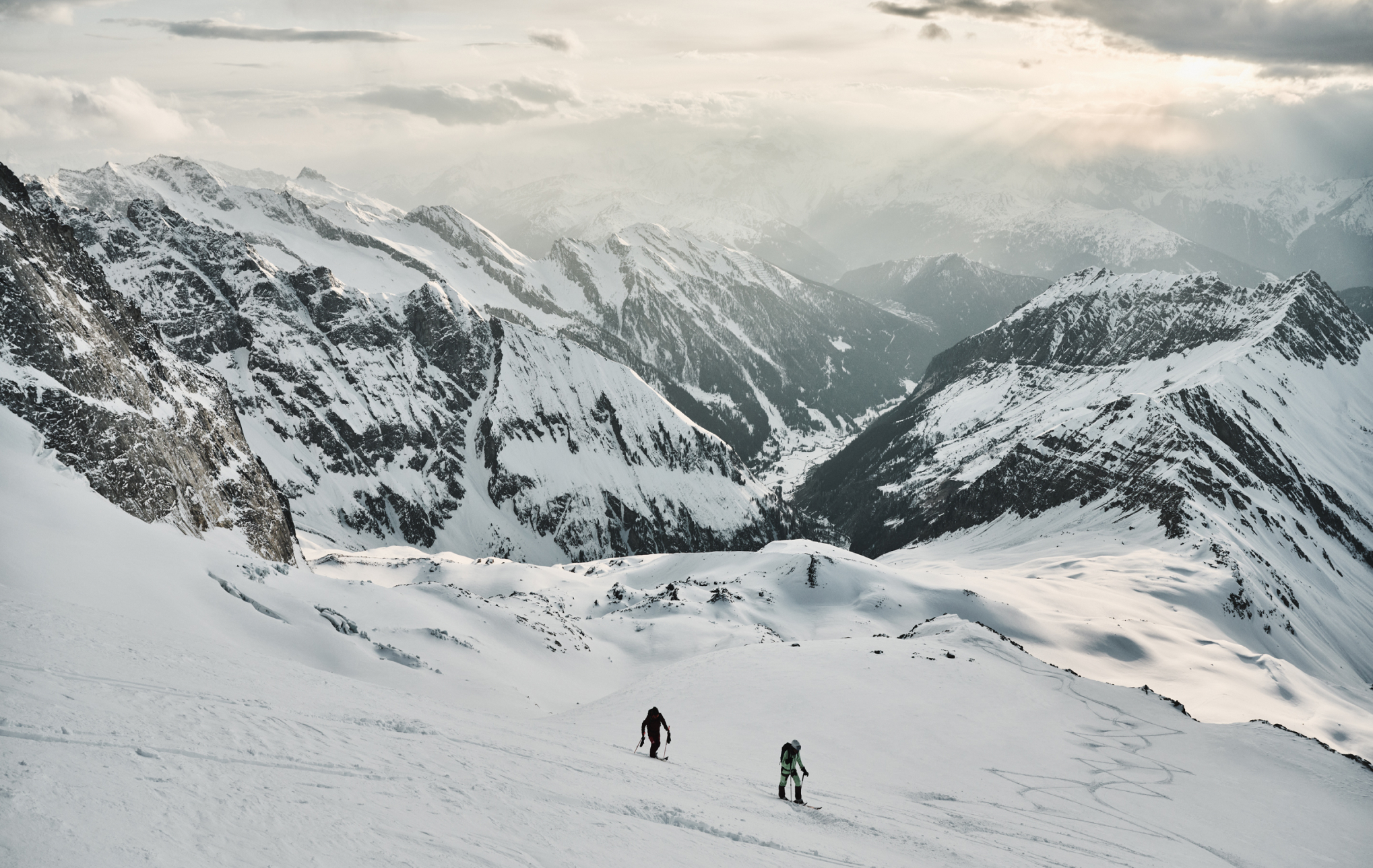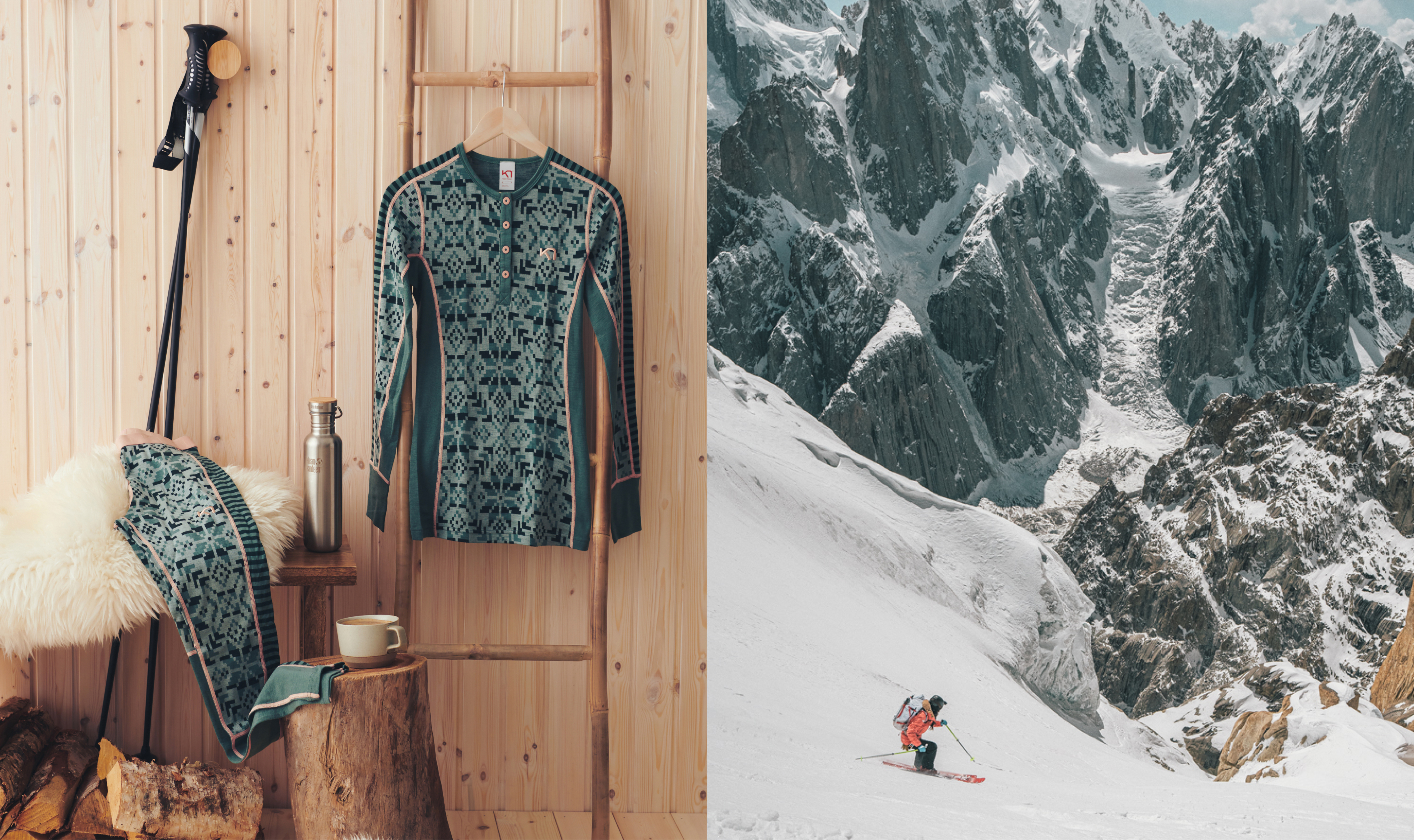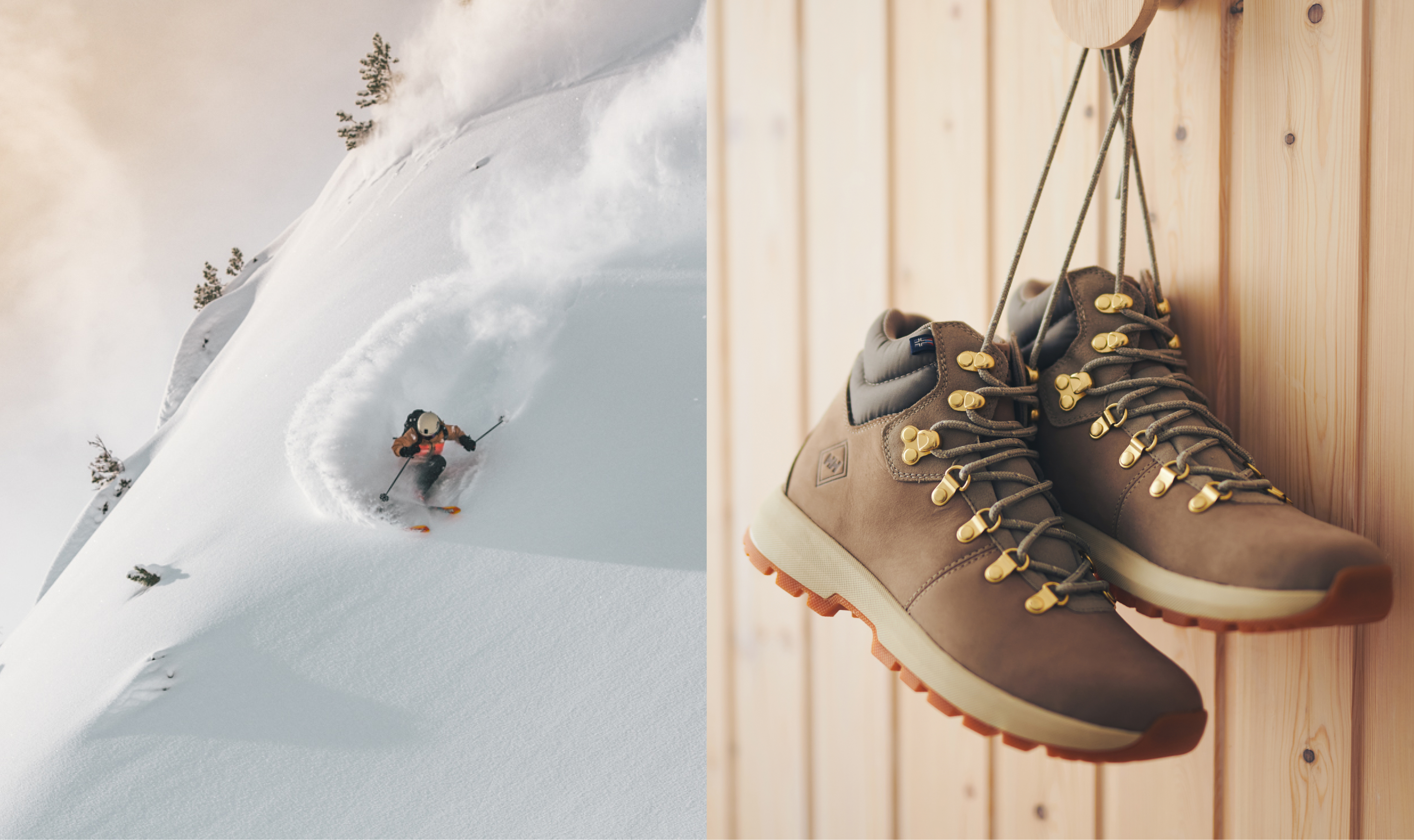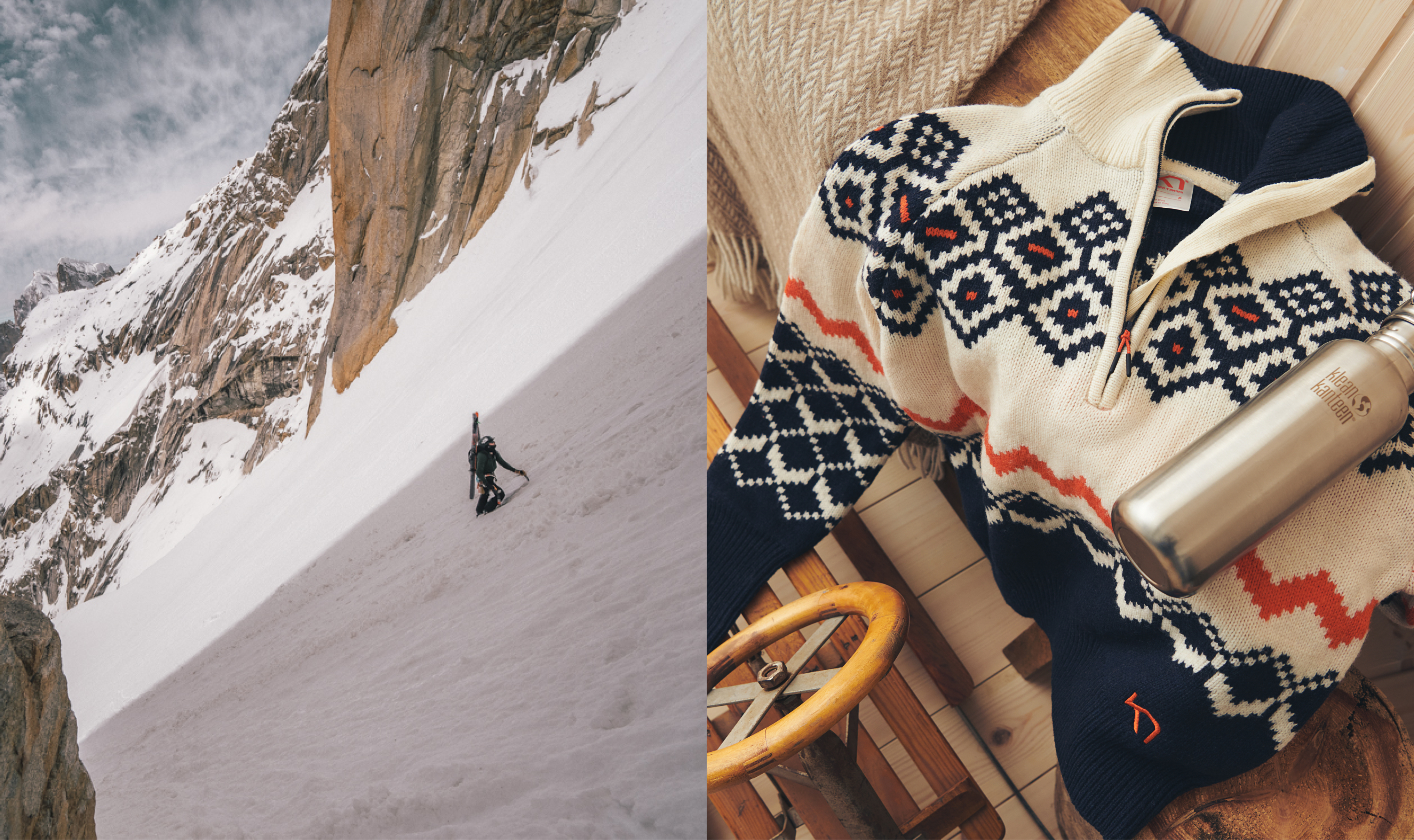

Nobody enjoys being cold and wet in the mountains. So when you're planning what to wear on your ski holiday, these basic principles on how to dress will help you to make the most of your time in the snow. Here we highlight why layering is important, so you’ll stay warm and cosy on slopes all day long.

We all know that wearing multiple layers is the best way to stay warm and comfortable and is much better than wearing a single heavy jacket. Here we break down the key benefits of each layer and the main things to look out for when buying your ski outfit this year.
The base layer:
Made from a range of high-performance fabrics such as merino wool or a polyester blend, a good base layer provides warmth and maximises breathability. A base layer efficiently wicks away sweat, preventing excess moisture from building up inside your outfit and making you cold. Designed to fit close to the body to maximise heat retention, this layer will help to regulate your body temperature and is fundamental to a good layering system.
Merino wool:
Merino base layers are incredibly lightweight, non-itch, and soft against the skin. Much warmer than a synthetic baselayer, they are also anti-bacterial, naturally shedding odours and rarely requiring washing over the course of a week-long trip. Because they are made from natural fibres, they are a sustainable choice compared to some other options.
Key characteristics: Warm, anti-bacterial, sustainable.
Synthetic:
A synthetic base layer is extremely breathable and helps to regulate your body temperature to prevent overheating. Soft, stretchy, and comfortable, they are great at wicking moisture away from the body which helps to keep you dry even during intense activity. While they dry more quickly than merino, synthetics do need to be washed more regularly to get rid of odours.
Key characteristics: Highly breathable, wicking, quick drying.

The mid layer:
The main source of warmth is a good mid layer as it traps heat and helps to collect the moisture dispersed by your base layer, pushing it further away from the skin. As well as providing you with insulation, you can easily remove or add to a mid-layer as your body temperature and the conditions change throughout the day. There are multiple types of midlayer available that all have their own advantages depending on the temperatures and intensity of your activity.
Synthetic:
Lightweight and highly breathable, fleece is the traditional midlayer of choice for snowsports enthusiasts. Less expensive than other options, it dries quickly, is highly packable, and naturally repels water, enabling it to provide insulation and warmth even when it's wet.
Key characteristics: Highly breathable, quick-drying, packable.
Merino wool:
Lightweight and super warm, a merino wool midlayer is ideal for use throughout the ski season as it is able to adapt to your body temperature and the weather conditions efficiently to keep you warm when it's chilly but keep you cool during intense periods of activity. Merino breathes to prevent overheating, is sustainably made, and is anti-bacterial which reduces the need for washing as it naturally wicks away odours.
Key characteristics: Warm, anti-bacterial, sustainable.
Down insulation:
A down jacket is an incredibly comfortable insulation layer that can be used for more than just your ski holiday. They offer a fantastic warmth-to-weight ratio, providing you with plenty of premium insulation without the bulk of other options. They are highly packable and can be compressed down to a small size, taking up little space in your bag when not in use. Ideal for use in colder conditions.
Key characteristics: Super warm, lightweight, packable.
Synthetic insulation:
Synthetic jackets use man-made polyester padding to provide warmth by trapping air much like a down jacket. Able to keep you warm even when they're wet, synthetic jackets are a great choice for high-intensity skiing in the extreme cold, or for use at the end of the season when temperatures rise. A versatile and lightweight option, they can be packed down almost as small as a down jacket. Ideal for use in colder conditions.
Key characteristics:Warm, moisture-resistant, lightweight.
Softshell:
Halfway between a fleece and a hard shell jacket, a softshell stretches and moves with you and can be used as a primary or additional midlayer on colder days. Water and wind-resistant, it provides protection from the elements while still maintaining a good level of breathability and moisture management. Super durable, it is more hard-wearing than fleece or merino, making it a versatile and long-lasting option for regular skiing.
Key characteristics:Weather resistant, stretch, highly breathable.

The outer layer:
Waterproof, windproof, and breathable, a good outer layer keeps moisture out while simultaneously working with the base and mid layers to maximise breathability and regulate your body temperature to prevent overheating. Jackets with a high level of waterproofing will have sealed seams to prevent moisture from getting in even in the harshest weather. Available in a wide range of styles and fits, a ski jacket is cut to allow space for your layers underneath and to give you the freedom to stretch and move while on the mountain. There are various types of jackets that all have benefits depending on what style you want, the conditions outside and your level of intensity while skiing.
Hardshell:
An uninsulated jacket, a hard shell jacket offers superior weather protection in comparison with other jacket types. Generally lined with a technical membrane, they are highly waterproof and windproof, making them ideal for use throughout the ski season and in all types of conditions. Slightly less breathable than softshell jackets, they are very lightweight and highly versatile as they allow you to layer up and down underneath depending on the conditions and your level of intensity.
Key characteristics: Highly waterproof, lightweight, versatile.
Softshell:
Comfortable, warm, and versatile, softshell jackets can be used as an outer jacket as well as under a jacket when you want to add an extra layer on colder days. Highly breathable, they are superb at regulating temperature and working with the other layers to wick moisture away during intense activity, also making them especially suited to skiing in warmer conditions towards the end of the season. Able to stretch and move with you, softshell jackets are a great option for intermediate and high-level skiers, as well as those who desire a more durable jacket for regular skiing.
Key characteristics: Highly breathable, stretch fabric, comfortable.
Insulated outer layer:
Ideal for use in the coldest conditions by all levels of skiers, insulated jackets are also suitable for use by beginners and those who are more sensitive to chilly temperatures throughout the ski season. Generally featuring a waterproof outer, what they lack in breathability is offset by supreme heat retention and insulation. Because insulated jackets are super warm and also highly windproof, they are perfect for use towards the start of the season or at higher altitudes where temperatures are colder and some extra insulation is necessary.
Key characteristics: Super warm, comfortable, ideal for beginners.
